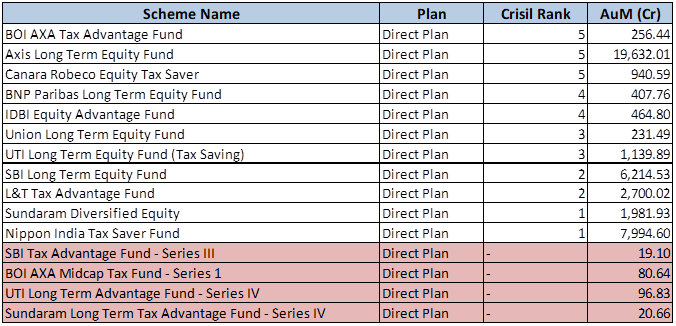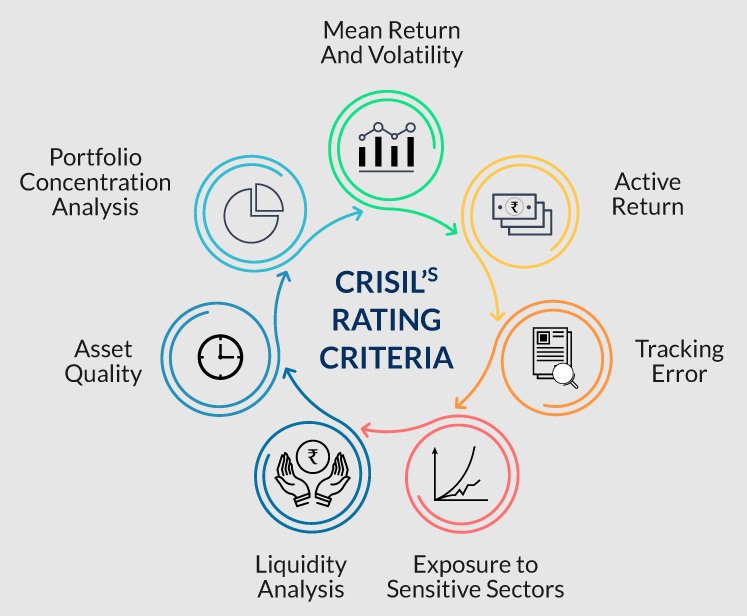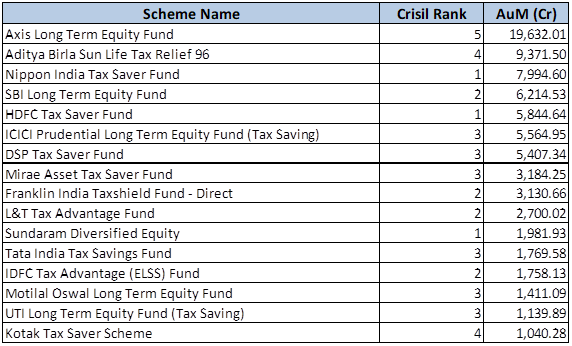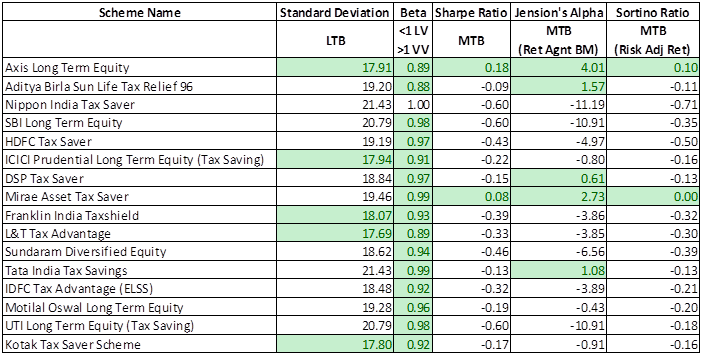Mutual Funds are nowadays becoming the most liked instrument for investing, its acceptance is growing at the rate of 25% CAGR in the last five years. Even after this astonishing growth & its craze in the middle class, most people do not know how to choose or how to find the best mutual fund for investment.
The most common ways by which a common man chooses a mutual fund is through some tip offered by an office colleague/relative or by investing in that fund in which a close friend has invested, or after seeing some frequent advertisement on TV or after reading some articles on the web (like top 10 mutual funds in India / best mutual fund for tax saving).
But these are not the right way of investing in mutual funds. Neither they are scientific nor they are rewarding, instead they are very risky ways of investing.
In this article, we will brief you about the steps (funnel approach) of choosing the best mutual fund for investment. These steps are universal and could be used to select the best mutual funds irrespective of the objective of investment or category of a mutual fund or types of fund i.e. direct or regular.
The funnels & principles we are using in this article will be the same as our last article on How To Find Best Shares To Buy. We will be pooling data from two well-known websites Money Control & Value Research.
Let’s begin & learn by finding the best mutual fund for tax saving (ELSS) in India.
Step 1 : CRISIL Rating Is The Best
Go to the money control or value research ELSS fund page and download the complete list of ELSS funds, there is a total of 132 ELSS funds present in the Indian market including direct n regular funds (but we will consider only direct funds for our study).
Sort these direct funds as per CRISL ranking as given in fig 1. Remove all the funds that do not have CRISIL ranking (shown in red in fig 1), this leaves us with only 35 funds for further evaluation.

Rationale: CRISIL ranking gives us a competitive comparison of funds, which tell us about the overall health of the fund. Funds handing CRISIL ranking tell us that fund has good standing in market and reliable.
To elaborate CRISL take the following parameters into consideration before ranking the funds Active Returns, Tracking Error, Portfolio Concentration, Mean Returns, etc. CRISIL rank funds from 1st to 5th.

Step 2 Assets Under Management (AUM)
Sort the remaining 35 funds on the basis of Assets Under Management (AUM) in descending order and remove all the funds whose Assets Under Management (AUM) is lesser than Rs. 1000 Cr. This leaves us with only 16 top ELSS Funds to evaluate.

Rationale: small retail investors like us should always give first priority to the safety of the original investment. And that can only be achieved by investing in funds having a large AUM or at least of the size of Rs. 1000 Cr.
The primary reason behind it is, mutual funds are a favourite instrument of big investors and they usually invest hundreds of corers in any particular fund. If any point of time they take out their money (which they commonly do), could effects the performance & investment portfolio of the fund very badly. Resulting in a huge loss of retail investors and even money could get stuck in funds waiting for a revival, that’s why we recommend investing in funds that have at least 1000 Cr AUM.
Step 3 Fundamental Analysis
Yes like share mutual funds also need fundamental analysis, but here we do not calculate any intrinsic value or free cash flow, instead, we will focus on important ratios pertaining to the fund. These ratios will show how the fund is performing among its peers or against benchmarks, it’s a comparative analysis. So let’s filter our 16 leftover funds on the basis of the below fundamental numbers:
- Standard Deviation : look for the lowest value among the funds.
- Beta Ratio : look for a value less than 1.
- Sharp Ratio : look for a fund with the highest value this ratio.
- Alpha : look for fund having the highest value among the funds.
- Sortino : looking for the highest value.
On the basis of the above standards, we have come out with the below picture (fig 3). Inhere only Axis Long Term Equity Fund has passed all the fundamental ratio test, apart from it Mirae Asset Tax Saver Fund is the closest competitor.

Even at this stage, we could safely say that Axis Long Term Equity & Mirae Asset Tax Saver Fund are the best mutual fund for investment or best mutual fund for tax saving. But still, one more step is left to be explained, so we will further analyse Axis Long Term Equity & Mirae Asset Tax Saver Fund further.
Rationale: The importance of these ratios are.
- Standard Deviation : it measures the volatility of the fund’s returns in relation to its average returns. It tells how much fund’s return can deviate from its average historical returns. High deviation means high unpredictability & lower means the opposite. So we should be looking for the lowest value among the funds.
- Beta : it measures mutual fund volatility as compares to its benchmark, if its value is more than 1 it means its more volatile & if less than 1 if shows less volatility. Fund either should mimic the benchmark or should be better than that, every retail or big investor look for a value less than 1 indicating less volatility.
- Sharp Ratio : it compares fund returns against returns of risk free funds. Example of risk free funds are Bank FD’s, Bonds, etc. In India we all have a habit of comparing investment against FD’s, this ratio does that only. Higher the value better the fund.
- Alpha : it measures mutual funds’ performance after adjusting the market risk, it shows how well the fund manager is managing the fund. How consistent is its performance in the presence of market risk & volatilities. Fund having highest value is best.
- Sortino : it predicts chances of loss on a particular investment, higher the number lesser are the chances of loss in a fund.
Step 4 Expense Ratio and Average Returns
Expense ratio is the cost born by an investor for getting its money managed by an expert fund manager. So as per basic understanding fund will give a higher return if it has a low expense ratio, as an expense is deducted from our returns only. The ideal expense ratio should be less than 1, in any case it should not go beyond 2.5.
Now come to fund returns; you must be thinking why we are discussing this most important aspect of the fund so late, as for returns only we invest in funds.
Your question is right as returns centrepiece of any investment. But as per us, method of choosing your mutual fund is the most important aspect in process then only returns matters (as then only they are assured), but if mutual fund choice is not scientific and based on emotions then there are fewer chances that you will get any good return.
As we have filtered ELSS funds through our funnel approach, now we can see the return part. Jot down year on year return of both the fund for at least four to seven years, also calculate the average of same. Two points need to be considered here
- First, seven year average of fund should be greater than equal to category average.
- Second, every year return of fund should be greater than equal to category average.

NOTE: consistent & above-average year on year returns shows that the fund manager is highly competitive & vigilant. He is performing above the competition.
Result: Expense ratio for Axis Long Term Equity is greater than Mirae Asset Tax Saver Fund (but less than 1), but Axis year on year returns are impeccable and supersedes not only category average but also Mirae Asset Tax Saver.
So we could conclude that both Axis & Mirae passed our funnel test and both are a good choice for ELSS Mutual Fund investment. For ranking, sake Axis stands first & Mirae second. With this, we end our article on how to find the best mutual fund for investment. Hope you like it, soon we will be coming out with more articles on mutual funds like How To Track Mutual Fund, When To Sell Mutual Fund and much more, stay tuned.
 Vriddhi India Empowering You
Vriddhi India Empowering You


As the admin of this website is working, no doubt very quickly it will be famous, due to its feature contents.